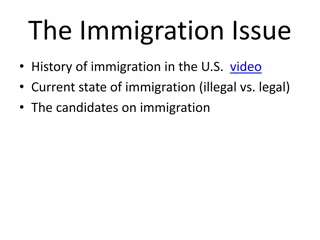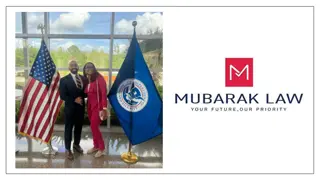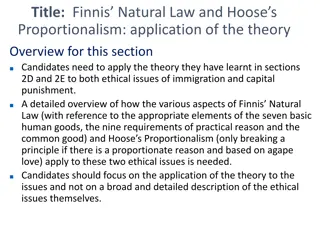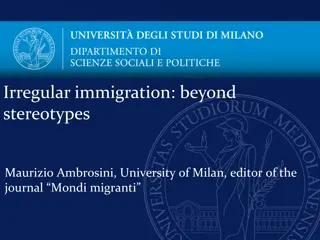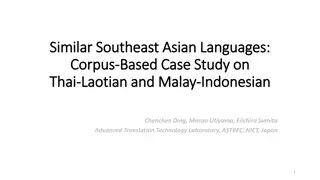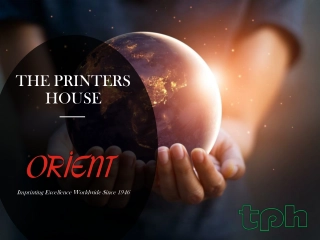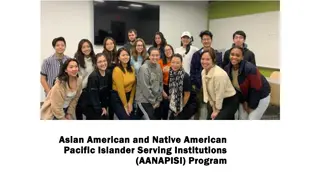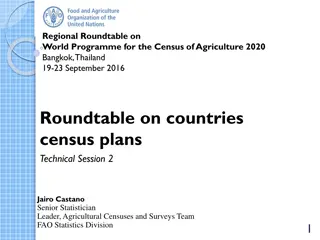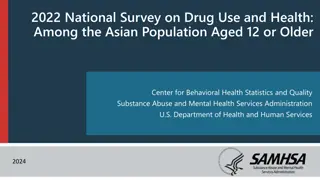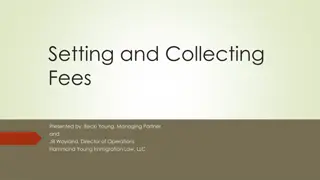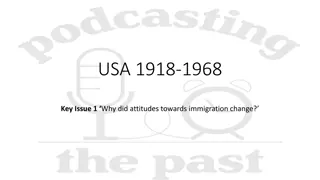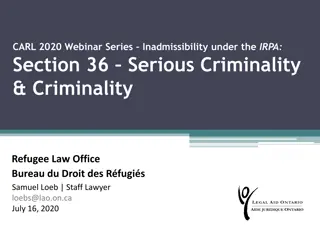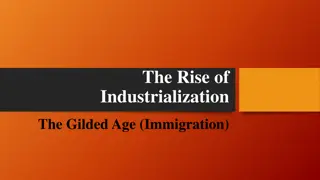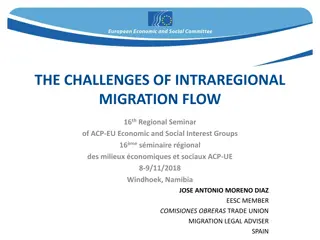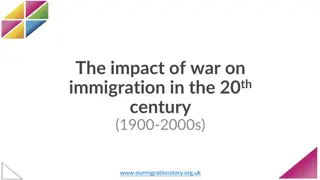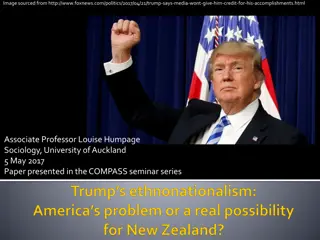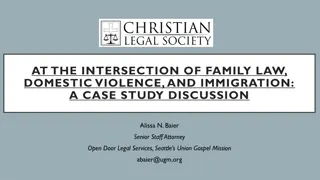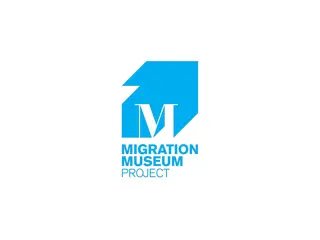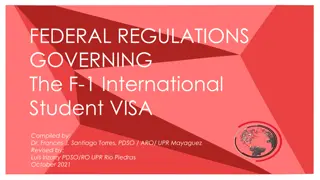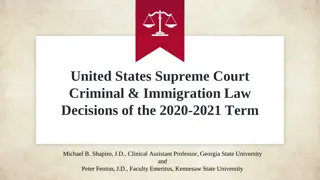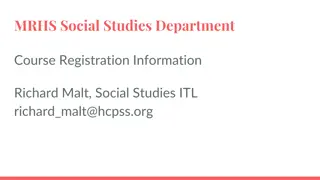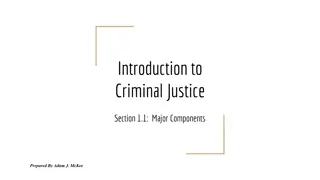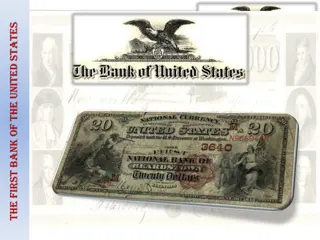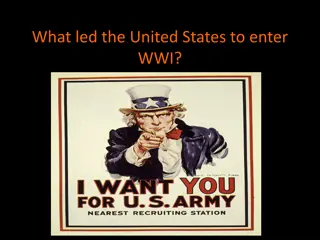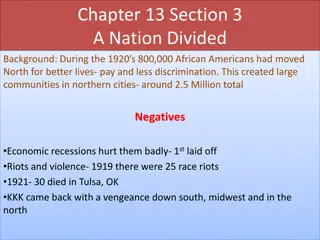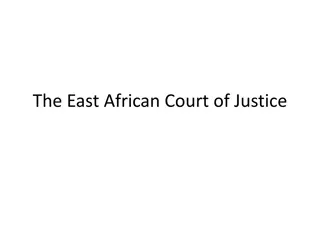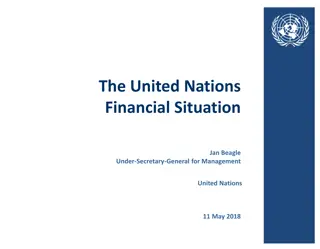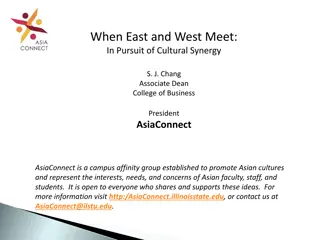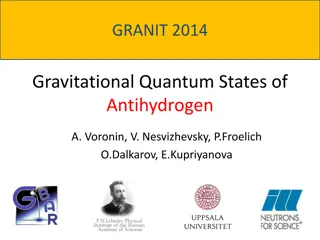The Struggles of East Asian Immigration in the United States, 1875-1946
The timeline of East Asian immigration to the United States between 1875 and 1946 reflects a history marred by exclusionary laws, such as the Chinese Exclusion Act and the Immigration Acts of the early 20th century. Angel Island served as a gateway, detaining and processing thousands of Chinese and Japanese immigrants amid discriminatory policies. The racial politics of exclusion, fueled by fears of disease and economic competition, shaped the experiences of those seeking a better life in America. The barriers faced by East Asian immigrants underscore a dark chapter in U.S. immigration history.
Uploaded on Sep 16, 2024 | 0 Views
Download Presentation

Please find below an Image/Link to download the presentation.
The content on the website is provided AS IS for your information and personal use only. It may not be sold, licensed, or shared on other websites without obtaining consent from the author. Download presentation by click this link. If you encounter any issues during the download, it is possible that the publisher has removed the file from their server.
E N D
Presentation Transcript
The Crooked Path and the Western Gate: Angel Island and East Asian Immigration 1904-1946 HI31L Week 12
Angel Island Immigration Timeline 1875 Page Law (1stUS law to regulate immigration)forbid the importation of involuntary Asian labourers and Asian women for the purposes of prostitution 1882 Chinese Exclusion Act legalises the restriction, exclusion and deportation of voluntary migrants from China and instituted documentary and inspection requirements; same year sees a general law excluding undesirables, inc. on medical grounds 1885-1907 new groups excluded (via legislation) on political, moral and contract grounds 1898 San Francisco detention shed 1904 Angel Island site commissioned for $250,000 opens 1910. Between this date and 1943, approx 100,000 Chinese detailed on Angel Island for up to 2 years. 1907 Gentleman s Agreement limits Japanese migration labourers excluded; families of existing residents and migrants can be summoned picture brides between 1907 and Ladies Agreement in 1920, approx 85,000Japanese women and children migrated through Angel Island 1913 Californian Alien Land Law restricts East Asian immigrants and residents from owning land (Issei generation subverts this by buying in the name of Nissei generation instead). Loophole only closed in 1920. 1917 Immigration Act mandates literacy testing, excludes all from the Asiatic Barred Zone , and suspected political radicals (inc. labour organisers) 1921 Quota Act 1924 Immigration Act reduces numbers and adjusts quotas to further favour desired Northern European migrants; Western Hemisphere migrants remain unrestricted but Asians now fully excluded by provision allowing migration only by those able to achieve citizenship 1940 Angel Island Administration Building destroyed by fire, and Angel Island closed as an immigration portal 1946 Angel Island US Immigration Service site at Angel Island retuned to the state of California
The (racial) politics of Exclusion
Race, Place and Disease Contagious and loathsome diseases : trachoma, hookworm, liver fluke, leprosy, syphilis, tuberculosis, gonorrhea; Mental fitness Liable to become a public charge --LPC
Science Guarding the Western Gate The nurses presented to each one of us a numbered wash basin And each one waits with his wash basin in his hands. One of the doctors, by voice and gesture, attempts to make clear what is being asked of us And, squatting behind the protective barrier of the beds, the astonished patients do their business, for the most part with great effort to produce something on the immaculate bottom of the wash basin. It would have been better to prepare us in advance, don t you think? The nurses, very serious, are there distributing to the most unfortunate some purgative salts. You aren t doing anything? Ah, that s bad. Very bad. You won t be allowed to leave here without having done something! Take another purgative, it is necessary that s the law! Impassive, without even turning the head, the gentle nurses carried the basins at arms length to the laboratory of the doctor in the midst of microscopes and tests, absorbed in his devilish duty. Jean Gontard, 1914
Race, Place and Disease "The main reason I was detained so long was that my father and I gave the inspectors different dates about when I departed China. The Chinese lunar calendar is about a month off from the American calendar! Ay! So my father hired a lawyer to get me out. Sometimes I cried because I missed my family and my friends." "Two men killed themselves, hung themselves. I went to the bathroom one morning and they were there. Maybe it was with a bedsheet. I screamed. I ran back to the barrack. They were probably about to be deported. I think one was about 30 years old, the other one 40." "Sometimes I wondered why we all came over here for that kind of treatment. Sometimes I just wanted to go home because they treated us like criminals. We were only immigrants." --- Lester Tom Lee
Coaching and the Crooked Path "My cousin and I had spent at least a year practicing for the interrogation even before we left for America. My father had written a book of questions and answers for me. There were diagrams of our village, our house. It even had a drawing of my uncle's hand and description of his moles and marks." "We studied about an hour a day. We studied on the ship (across the Pacific Ocean) and we kept studying once we got to Angel Island, too. I was nervous." "The questions were tough. Not just how many people were in my family, but where do they sleep? What picture is hanging on which room of the house?" "I met an older man in the barrack, he was in his 30s or 40s. He seemed well- educated and articulate but he had gotten stuck at Angel Island because he didn't have the right papers. We called him "Number One" because he knew the guards really well." "All of us -- all we wanted was to stay in this country." --- Henry S. H. Gee
Migrants from a strong state: the Gentlemans Agreement and Picture Brides
Recovering the past


